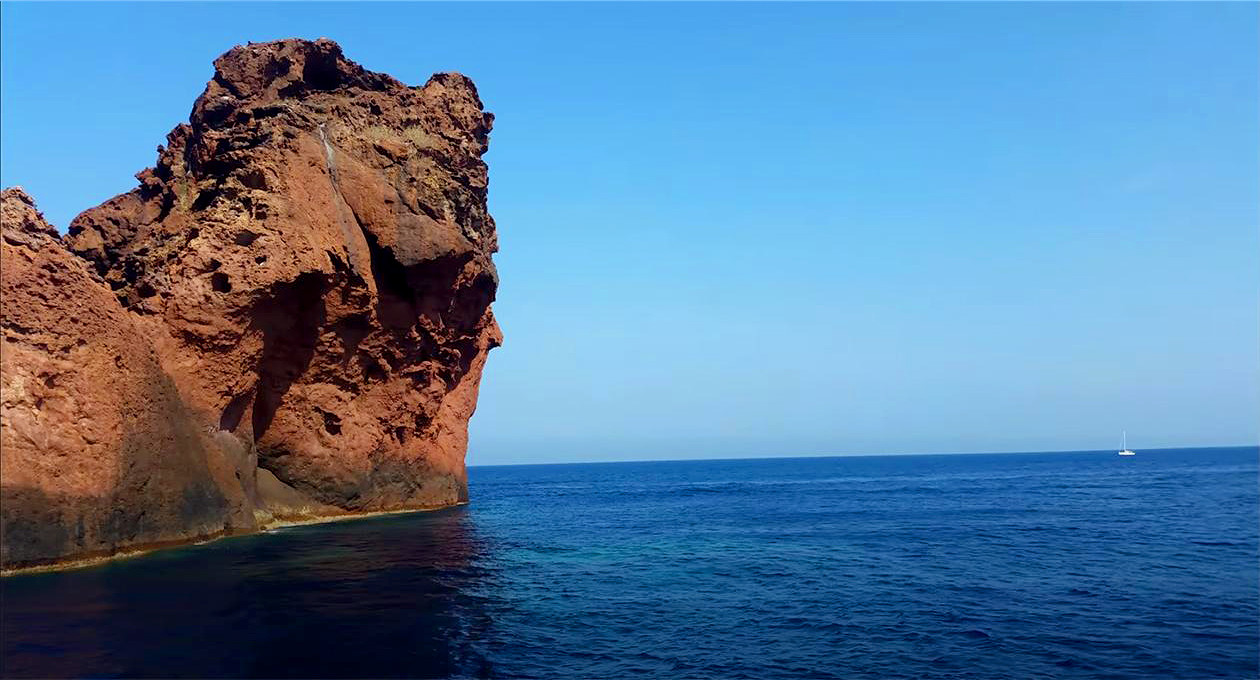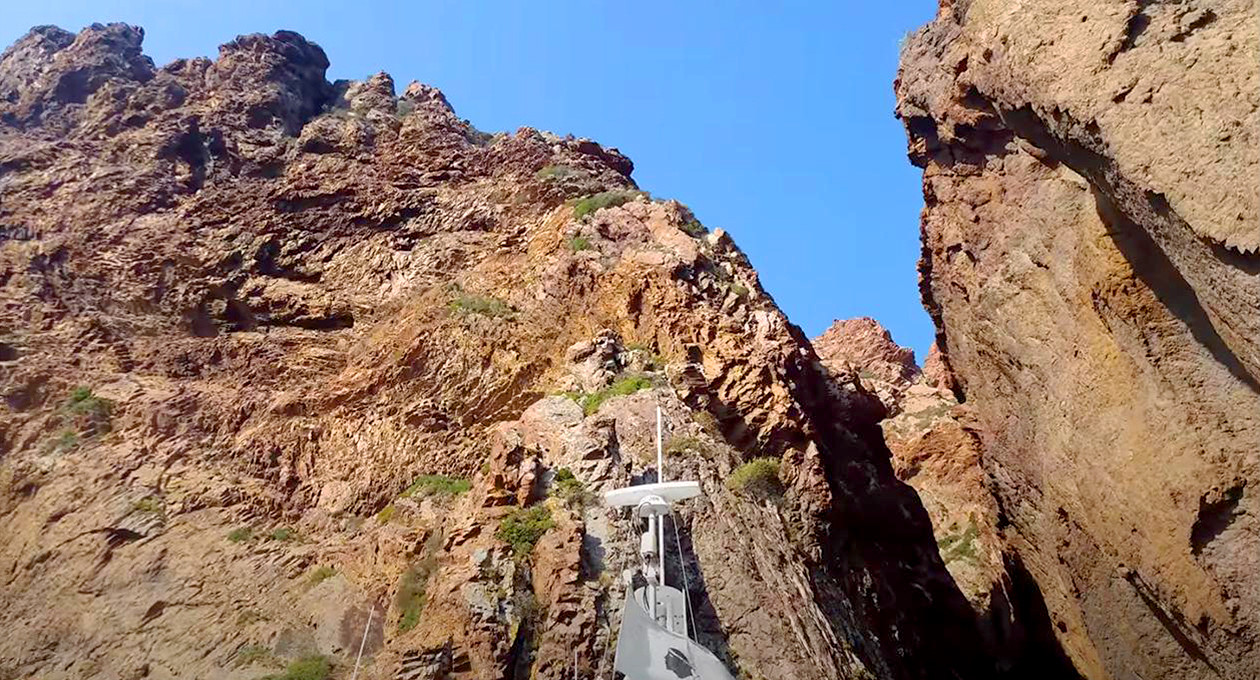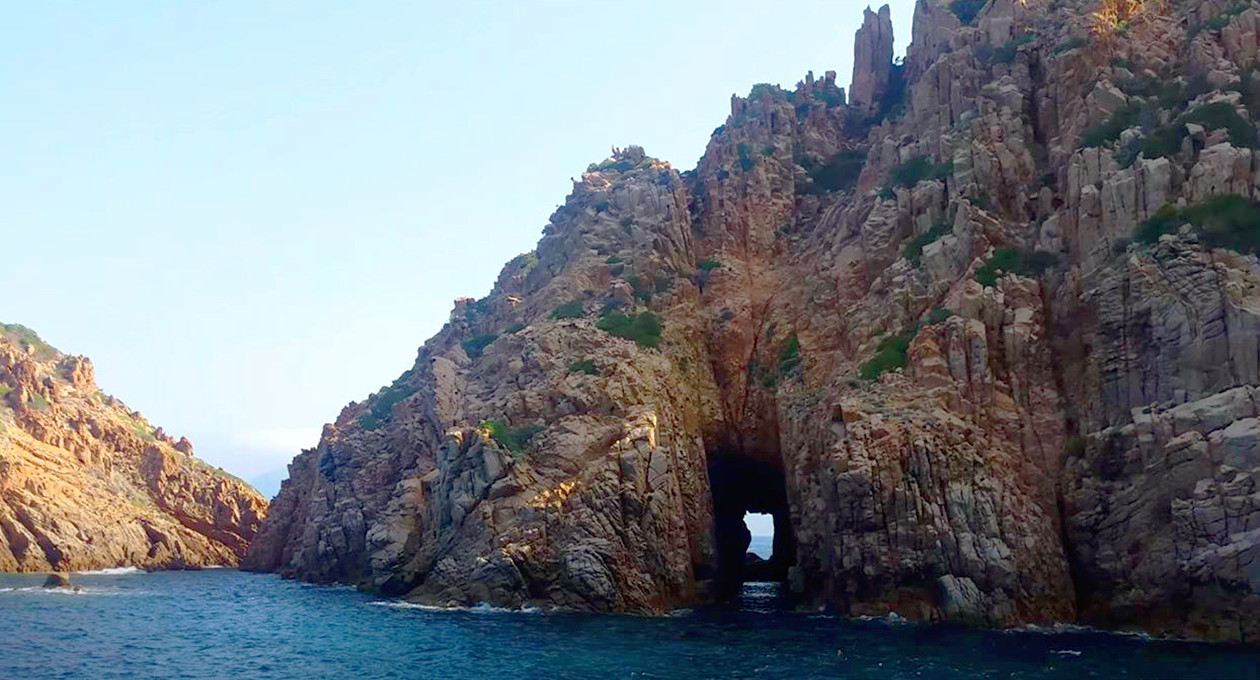
The Sea – Scandola Nature Reserve
Scandola offers in an explosion of colors its landscapes and fantastic escarpments, punctuated with geological curiosities or the ‘taffoni’, sculptures in hollow shaped by the wind and the salt of the sea spray.
On the red cliffs clings the vegetation: myrtles, lentisks, tree euphorbias, holm oaks, arbutus trees, tree heathers and rockroses up to 500 meters of altitude.
At the water’s edge, a calcareous algae develops that agglomerates over the years to form real sidewalks in certain caves.
The transparency and purity of the water allow the abundance of underwater life.
Created on December 9, 1975, Scandola was the first Reserve of France with a double vocation: marine and terrestrial.
Its surface area is 900 ha on land and 1000 ha marine. This peninsula of volcanic origin closes in the north of the Gulf of Porto, the first French natural site registered on the list of the UNESCO world heritage.
Since 1982, it has been part of the Network of Specially Protected Marine and Coastal Areas of the Mediterranean. Its exemplary management has earned it the diploma of category A of European Nature Reserves awarded in 1985 by the Council of Europe, a diploma renewed in 1990 and 1995.
The reserve is above all remarkable for its geology.
It occupies the peninsula of Scandola, an impressive massif of porphyry with tormented forms. Its vegetation is a remarkable example of maquis.
One finds there gulls, cormorants and fishing eagles. The transparent waters, with inaccessible islets and caves, are home to a rich marine life.
There are more than 450 species of algae. For some of them, Corsica is the only Mediterranean area of predilection. On the vertebrate side, the abundance is remarkable, 125 species have been inventoried, in particular for those that have become rare in the Big Blue: the grouper (or Epinephelus marginatus), the badêche (Epinephelus alexandrinus), the denti (Dentex dente).
At the infralittoral stage, the most favorable to life in the marine environment, the temperature changes and the saline variations are moderate. Life develops harmoniously there. Nothing hinders the photosynthesis of plants and animals, they find their food and the food chain, as complex as it is, can be established.
The edible sea urchin and the black sea urchin are fond of soft algae and calcareous algae respectively.
There are blue limpets, schools of saupes, red mullets, oblades.
Much lower, from thirty meters depth, it is the circalittoral stage. The coralligenous, one of the most extraordinary landscapes of the Mediterranean, unfolds here. The ledges and the mineral draperies are covered with gorgonians. Then it is the turn of the red coral, sponges, ascidians and a green alga called Halimeda tuna.
Our king fish, the grouper, appears in the half-light, as well as the lobsters and the barber fish.
The reserve is a refuge for protected species. It is one of the last sites that shelters the Patelle Ferrugineuse.

The fort of the Scandola Reserve

Slender rock on the sea

View from the boat

Cave dug by the sea

The cliffs
Need help? Contact us
☎ Call us ☎
CAMPING
![]() 8am-10pm : 04 95 26 11 65
8am-10pm : 04 95 26 11 65![]() 9am-7pm : +336 18 81 17 13
9am-7pm : +336 18 81 17 13
RESERVATION
![]() 9am-7pm : 06 18 81 17 13
9am-7pm : 06 18 81 17 13![]() 9am-7pm : +336 18 81 17 13
9am-7pm : +336 18 81 17 13
EMERGENCY
![]()
![]() 24h/24h : 06 19 10 18 96
24h/24h : 06 19 10 18 96
Write to us ✎
We will get back to you as quickly as possible everyday of the week except on Friday.
E-mail: funtana.contact@gmail.com
Funtana a l’ora ➤
Il campo – Route d’Evisa
20150 PORTO – OTA
France – Corse
E-mail: funtana.contact@gmail.com
Home
Cabins
Mobil-Home
Camping
Activities
Pizzas
Modify booking
Campsite map
Follow us
Terms and Conditions of Sales
Legal Notice




